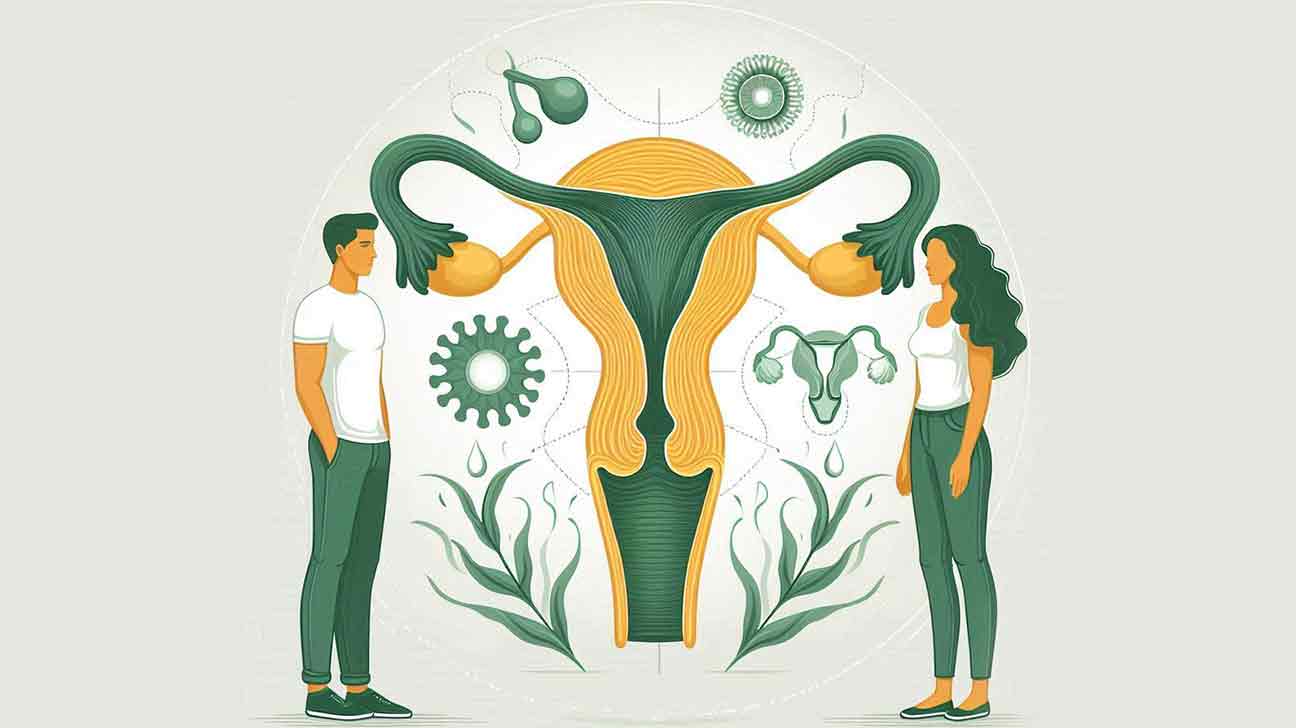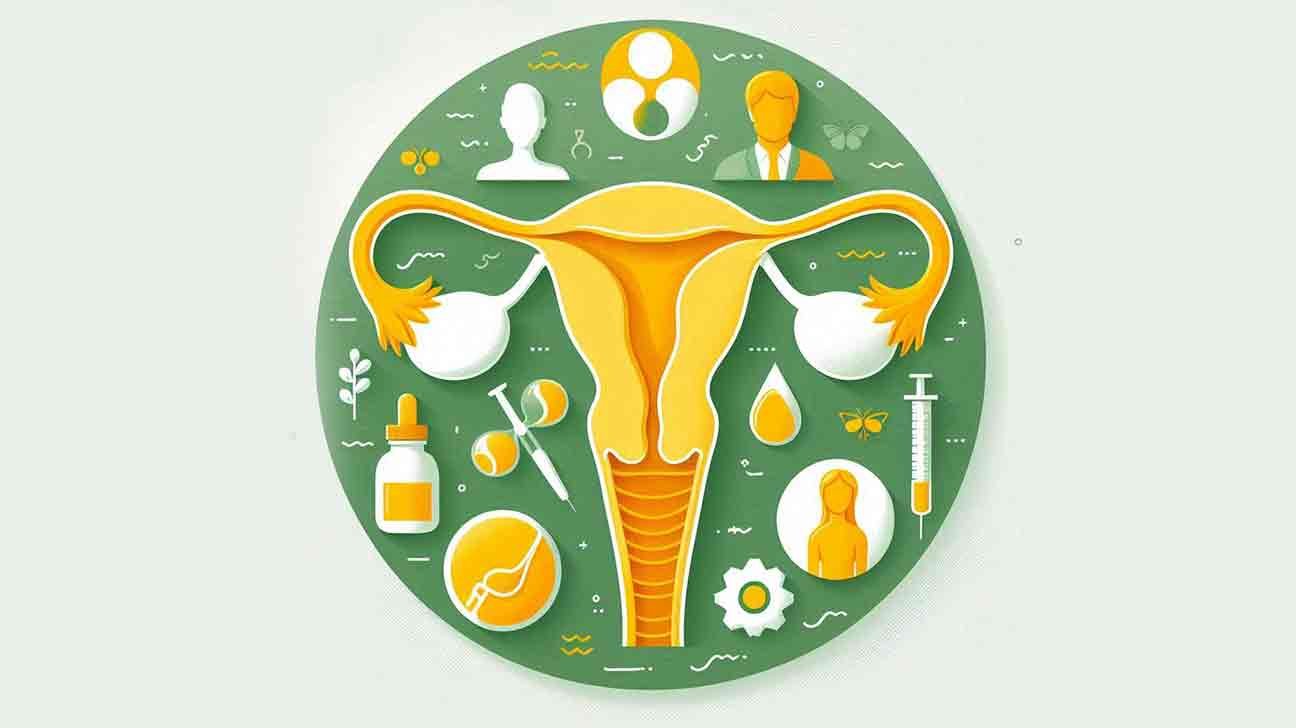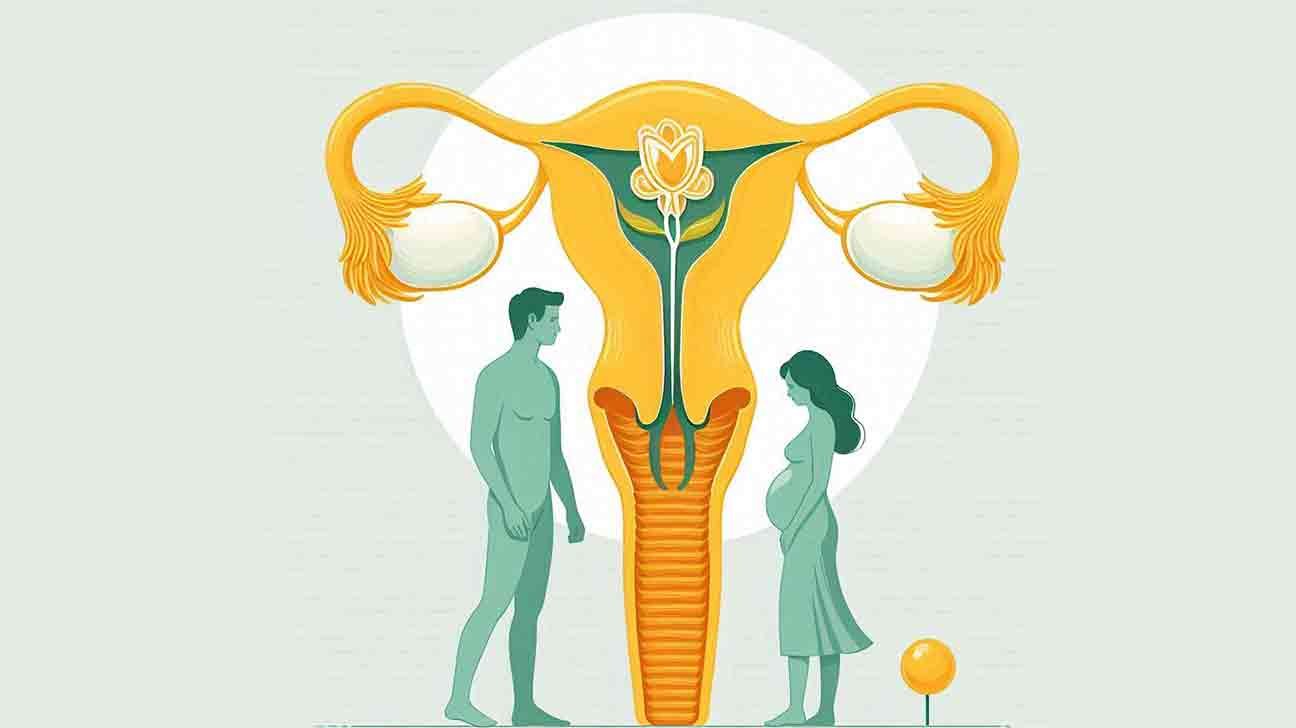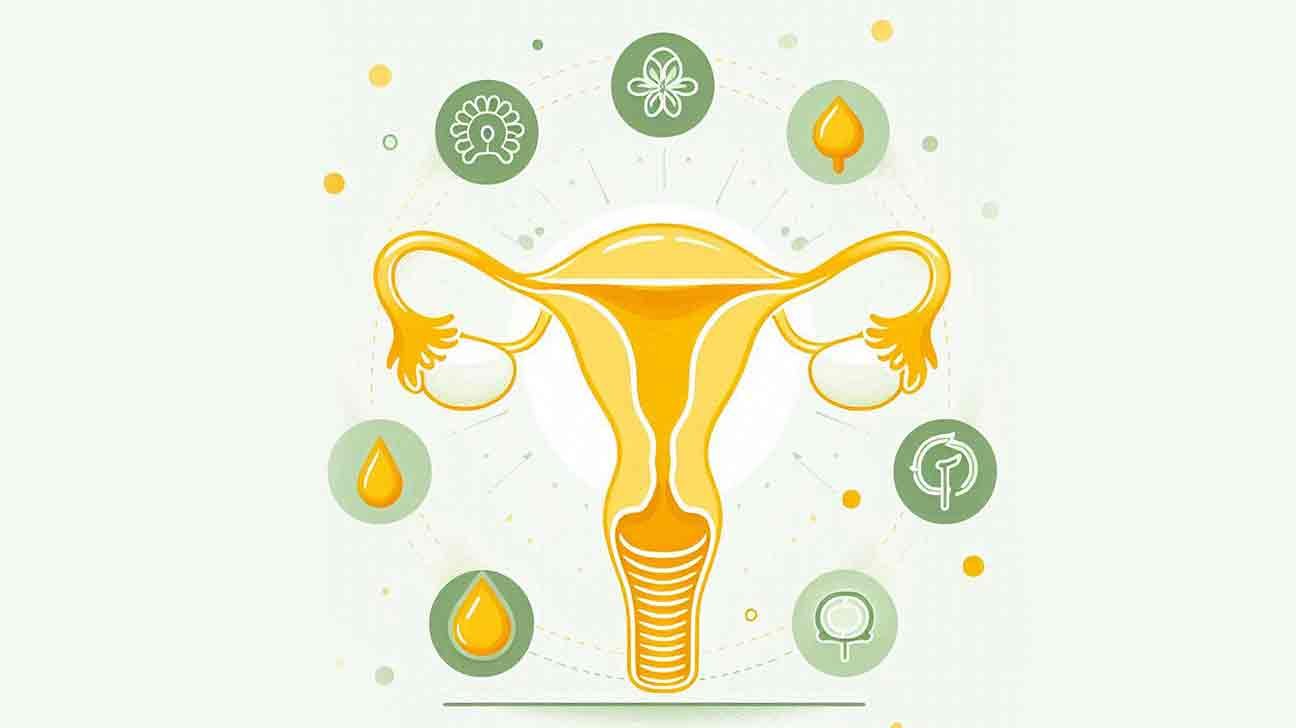
An anteverted uterus is a naturally occurring uterine position where the uterus tilts forward toward the bladder. This orientation is considered normal and common among women.
Understanding the structure of the female reproductive system includes knowing about the positioning of the uterus. The anteverted uterus, leaning forward, contrasts with a retroverted uterus that tilts backward. Most women have an anteverted uterus and this position typically doesn’t affect fertility or health.
It’s part of the natural variation in female anatomy, requiring no treatment unless associated with symptoms like pain or discomfort. Although commonly asymptomatic, awareness of uterine positioning is beneficial during pregnancy and certain medical procedures. Knowing about an anteverted uterus can alleviate concerns about abnormality, as it is usually a normal finding during gynecological examinations.
Anteverted Uterus
Causes And Risk Factors of Anteverted Uterus
An anteverted uterus is common among women. It is when the uterus tilts forward. Many factors can influence this tilt. Let’s delve into the common causes and risks.
Pelvic Inflammatory Disease (pid)
Pelvic inflammatory disease may cause an anteverted uterus. Bacteria from sexually transmitted infections can lead to PID. This can make the uterus tilt forward.
Endometriosis
Endometriosis can also tilt the uterus. It happens when tissue grows outside the womb. The abnormal tissue growth may force the uterus into an anteverted position.
- Severe pain during periods
- Dyspareunia
- Infertility issues
Uterine Fibroids
Noncancerous growths called uterine fibroids can change the uterus shape. Their size and location may cause an anteverted position.
| Risk Group | Frequency |
|---|---|
| Women in their 30s and 40s | More common |
| Women with family history of fibroids | Higher risk |
Pregnancy
Pregnancy often causes a natural forward tilt. Hormones and a growing baby can shift the uterus. It usually returns to position after childbirth.
Symptoms And Complications of
An anteverted uterus refers to the tilt of the uterus. This tilt is towards the bladder. For some women, it causes no symptoms. Yet, others might face certain discomforts. Knowing these can help in managing and treating the issues early on.
Painful Intercourse
Painful sexual experiences are a significant symptom. The tilt in the uterus can cause pressure or pain during intercourse. This is particularly true for certain positions. Women might feel discomfort or sharp pain.
Lower Back Pain
Chronic lower back pain may signal an anteverted uterus. Some women experience ongoing discomfort. This pain is generally around the lower back area. Regular activities or certain movements can make this pain worse.
Urinary Frequency
Increased need to urinate can be another clue. The uterus’ position places pressure on the bladder. This causes a feeling of fullness or an urgent need to pee. It can happen even when the bladder is not full.
Difficulty Inserting Tampons
Women with this type of uterus may struggle with tampons. Inserting tampons can be difficult or uncomfortable. This is because of the angle of the vaginal canal. It may not align with standard tampon designs.
| Symptom | Description |
|---|---|
| Painful Intercourse | Discomfort during sexual activity due to uterine pressure. |
| Lower Back Pain | Ongoing lower back discomfort aggravated by movement. |
| Urinary Frequency | Frequent urge to urinate caused by pressure on the bladder. |
| Difficulty with Tampons | Challenges inserting tampons due to vaginal canal angle. |
- Regular check-ups help in monitoring symptoms.
- Physical therapy might relieve back pain.
- Specialized tampons or cups can assist with menstrual management.
Diagnosis
An anteverted uterus is a common condition where the uterus tilts forward. For those feeling uncertain about their symptoms, diagnosis is simple and reassuring.
Detecting an anteverted uterus involves a few straightforward procedures. Your doctor will guide you through them. These tests confirm the uterus orientation and rule out complications.
Pelvic Exam
Pelvic Exam
A pelvic exam is the first step. During this test, the doctor feels for the uterus position. The exam is quick with minimal discomfort.
Ultrasound
Ultrasound
The ultrasound offers a clear image of the uterus. It uses sound waves to confirm the anteverted position. The process is safe and painless.
MRI
Mri
In rare cases, an MRI might be recommended. It provides detailed images and helps rule out other conditions. The MRI is a non-invasive test.
Treatment Options
An anteverted uterus is a common condition where the uterus tilts forward. Many women live comfortably without even knowing they have it. For some, it can cause symptoms like discomfort or urinary issues. The treatment plan depends on these symptoms. Understanding your options can offer relief and improve your quality of life. Let’s explore the available treatments.
No Treatment Necessary
Most women with an anteverted uterus do not need treatment. This position of the uterus is normal and typically doesn’t affect health or fertility. Regular check-ups can ensure everything stays normal.
Medication
In cases where symptoms arise, medication can help. Anti-inflammatory drugs and pain relievers may ease discomfort. Doctors can recommend the best options.
Physical Therapy
- Pelvic floor therapy helps strengthen the muscles around the uterus.
- It can relieve pain and improve bladder control.
- Individual plans cater to your body’s needs.
Surgery
Surgery is rare for an anteverted uterus. It might be an option if severe symptoms persist and other treatments fail. Surgical interventions, such as a uterine suspension, can adjust the uterus’s position. Consult with a specialist to understand the risks and benefits.
Remember to discuss these options with your doctor. Each case is different. Professionals can guide you to the best treatment for your unique situation.
Anteverted Uterus And Fertility
The anteverted uterus is a common variation of uterine position where the uterus tilts forward. Many women have this orientation without knowing it, as it usually doesn’t cause symptoms. When considering fertility, myths often swirl around the notion that the position of the womb can significantly impact one’s ability to conceive. Let’s explore the reality behind an anteverted uterus and its influence on fertility and pregnancy.
Effect On Conception
Is conception harder with an anteverted uterus? Rest assured, the uterine position generally has no effect on a woman’s fertility. Scientific evidence suggests that an anteverted orientation is perfectly normal and is not a barrier to getting pregnant. Most women with this uterine position can conceive without difficulty.
Potential Challenges During Pregnancy
While the position doesn’t hinder conception, rare circumstances during pregnancy may arise. An anteverted uterus seldom complicates pregnancy. Occasionally, it may be associated with urinary frequency in the first trimester. As pregnancy progresses, the growing uterus typically shifts and adaptations occur. Thus, potential early discomfort is often short-lived.
- Increased urination in early stages
- Pressure symptoms improve as pregnancy advances
Management And Self-care
Management and Self-Care for an anteverted uterus involves simple yet effective strategies. Women can maintain comfort and health with these methods. Various techniques help ease any discomfort that might be linked to this common uterine position. Let’s explore ways to manage and provide self-care through pelvic exercises, heat therapy, and lifestyle modifications.
Pelvic Exercises
Strengthening the pelvic floor is crucial. Strong muscles lead to better uterus support. Here are some beneficial pelvic exercises:
- Kegel exercises: Tighten and hold pelvic floor muscles, then release.
- Bridges: Lie on your back, feet flat, lift your hips, and hold.
- Squats: Stand with feet apart, bend knees, and lower your body.
Practicing these regularly can make a noticeable difference in pelvic strength.
Heat Therapy
Heat therapy is a comforting solution, particularly if you experience pain. It includes:
- Using a heating pad on the lower abdomen.
- Taking a warm, soothing bath.
Warmth helps relax muscles and reduce discomfort. Use heat for short periods for best results.
Lifestyle Modifications
Making small changes in daily life aids in managing an anteverted uterus. Consider these tips:
| Area | Modification |
|---|---|
| Diet | Eat fiber-rich foods to avoid constipation and straining. |
| Exercise | Include low-impact activities like walking or swimming. |
| Posture | Maintain a proper posture to reduce pressure on the pelvis. |
Adjusting these aspects can enhance comfort and support overall health.
When To See A Doctor
An anteverted uterus is a common position in which the uterus tilts slightly forward. Most women with this uterus position experience no symptoms. Still, certain signs require a doctor’s attention. It is important to note any unusual changes. Identifying potential concerns early can lead to better outcomes.
Persistent Pelvic Pain
Occasional pelvic discomfort is normal. Consistent pain is not. You should see a doctor if you experience:
- Sharp, recurring pain in the pelvic area.
- Discomfort that interferes with daily activities.
- Pain that does not improve with over-the-counter medications.
Such symptoms might indicate issues beyond a tilted uterus.
Changes In Menstrual Cycle
Menstrual patterns can vary. However, it is crucial to seek medical advice if you notice:
- Heavier than usual bleeding during periods.
- Menstrual cycles that are shorter or longer than normal.
- Unexpected spotting between periods.
Sudden changes might suggest an underlying condition.
Difficulty Getting Pregnant
While an anteverted uterus rarely causes fertility issues, you might want to consult a doctor if:
- You have tried to conceive for over a year.
- You are over 35 and have tried for six months.
- You have irregular periods or no periods.
A specialist can assess possible reproductive challenges.
Seeking medical advice for these concerns is vital. Early detection of any complications can ensure appropriate healthcare measures are in place. Remember, timely medical consultations uphold your well-being.
Frequently Asked Questions Of Anteverted Uterus
What Are The Side Effects Of An Anteverted Uterus?
An anteverted uterus typically causes no side effects and is a normal anatomical variation. It generally does not impact health or fertility.
Which Uterus Position Is Normal?
The normal position of the uterus is anteverted, meaning tilted slightly forward. This alignment is typical for most women.
What Is The Anteversion Of The Uterus?
Anteversion of the uterus refers to its normal forward tilt, where it angles over the bladder. This positioning is common in most women.
What Is Anteverted Versus Retroverted?
Anteverted refers to a forward tilt of the uterus, common in most women. Retroverted describes a uterus that tilts backwards toward the spine. Both conditions are typically normal anatomical variations.
Conclusion
Understanding an anteverted uterus is crucial for personal health awareness. This common condition rarely causes concern and is often symptom-free. For those experiencing issues, medical consultation can provide guidance. Embracing our bodily variations is important; knowledge empowers us to do just that.
Remember, every woman’s body is unique and remarkable in its way.






